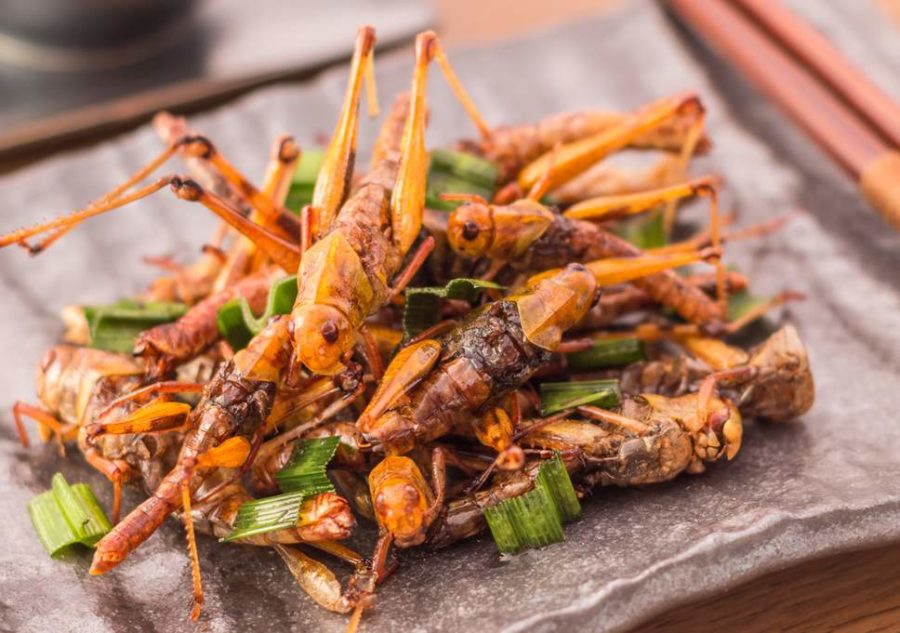Tastes Just Like Chicken
May 22, 2019
Imagine this: You walk up to the Snack Shack and read what is available: the usual Dorito’s, Microwavable Burritos, and Cricket Crisps… wait, Cricket Crisps?
This would be a completely normal snack in Thailand, China, and many other countries. You may even come home to enjoy a dinner of Orthoptera (Grass Hoppers, Locusts, Crickets, etc.), shish-ka-bobs, or Giant Waterbug served with some vegetables. As many as 80% of the world’s population consume insects as a completely normal part of their diet. A huge reason for our lack in insect consumption in America is due to its unfortunate status in our social norms. Instead of Taco Tuesdays, we could very soon be having Tarantula Thursdays.
Ingesting insects instead of red meat has a myriad of advantages. Not only do they offer far more nutritional benefits, but they are extremely environmentally friendly. In a world with a rapidly-growing global population who, in turn, will require a higher demand for food, it is essential to find more efficient sources of food, all the while using the same amount of resources, if not less, than what we have available now.
The global population is projected to be at 9 billion by as soon as 2050– 1.5 billion higher than our current population. A population of this size will require the production of meat to double, according to the Food and Agricultural Organization of the United Nations. This means that the land, water, and feed requirements will drastically increase as well. Alternatively, crickets require 12 times less feed than cattle or pigs for the same amount of mass. For the same mass of insects, generally they will require 90% less land, water, and feed, while producing only a fraction of the greenhouse gases that cattle do.
Insects, such as crickets, ants, or mealworm, are very high in protein, with less fat, and contain nutrients hard to find in other foods. They, in general, have a smaller protein content compared to beef (about 20 grams of protein for every 100 grams of insects, whereas lean beef has 27 grams of protein for every 100 grams), but have 60% less fat per gram as beef. Each of the 1,900 edible insect species offer their own niche as to what nutrients they provide. The giant water bug, a common staple in the Sub-Saharan African diet, has four times as much iron per gram as beef. Crickets have an abundance of Vitamin B-12, and offer twice as much as beef does.
Clearing forests for the use of farming is a major contributor to greenhouse gas emissions and global warming; as are the farm animals themselves, specifically cattle. Agriculture contributes to about 24% of the United States greenhouse gas emissions.
Although further research is required to fully understand what the impacts of the industrialization of insects could hold, our 6-legged enemies might just be our tasty and environmentally friendly meat alternatives very soon. And just an added bonus; they even have that satisfying crunch.
(This article is dedicated to Morgan Jones and Jack Marsh)







